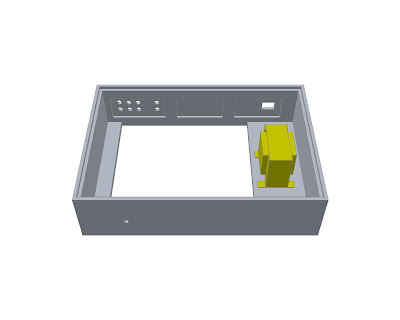The first thing I look into is the chassis. Chassis can make or break the project.

Dimensions
My choice is, 17in (432mm) wide, 12in (305mm) deep & 4in (100mm) height.
17 inch wide is the commonly accepted "full width" of any Audio/Video home equipment.
12 inches deep is the size I experienced as "just big enough" physically yet not too clumsy visually.
4 inches is the height that is "just-tall-enough" to mount most audio components such as power capacitors & chokes; This I learn through years of experience.
Layout
I like to keep the power transformers to a corner of their own to keep potential electromagnetism headache which it is associated with. In this particular build, the power trans I am using is a bare, its ugly & exposed, no covers or bells, so I for safety & aesthetic reasons, will keep them out of sight by mounting it inside the chassis. is ugly...
Took some time to create a 3D model of my intended chassis, its only partly completed but these which are drawn will be final. Eagle eye readers will notice I have a larger bottom board for mounting the transformer. This is important, transformer is a chunk of metal & it's really heavy... So a strong base is important. Too lazy to put in all the components in the 3D model. I draw a 2D layout instead.






